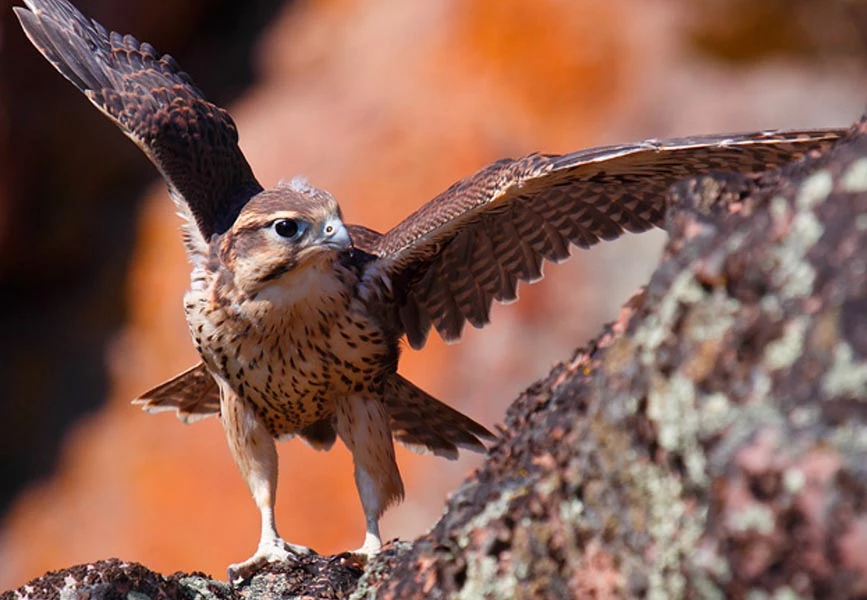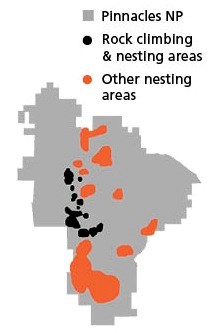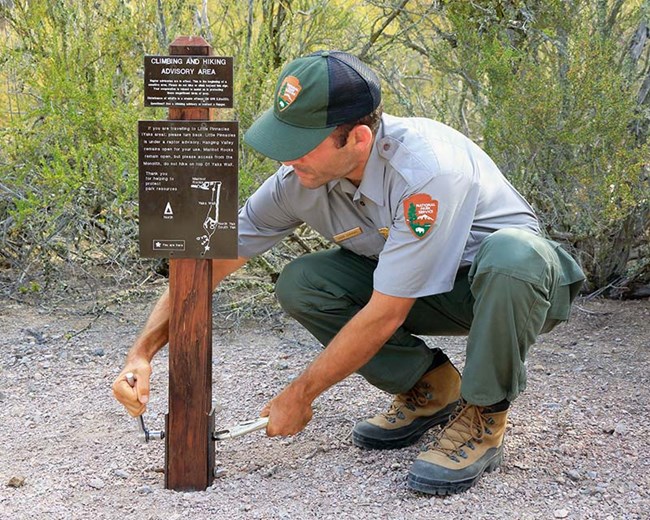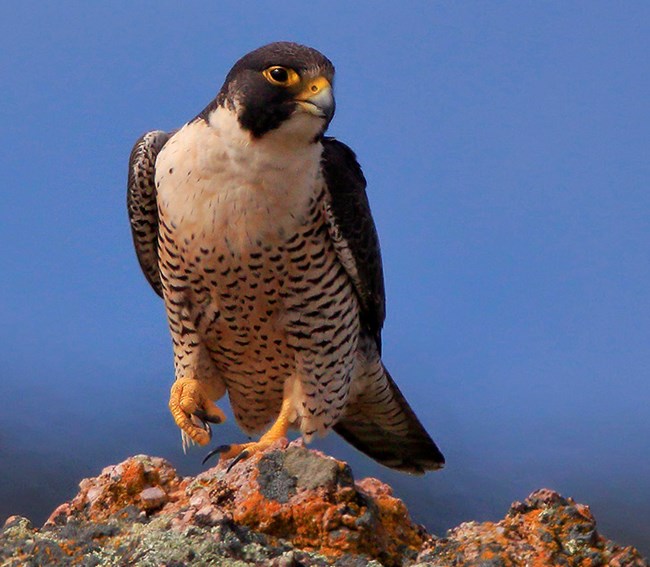Last updated: April 19, 2021
Article
Prairie & Peregrine Falcon Monitoring at Pinnacles National Park

NPS / Gavin Emmons

Why Are Prairie & Peregrine Falcons Important?
Rock climbers value access to the spectacular cliffs that Pinnacles National Park is known for, but they are not the only ones. Prairie falcons nest on the park’s cliffs at the highest densities known in any National Park Service unit in the country. Peregrine falcons, listed as Fully Protected in California, also nest on cliffs at Pinnacles. Both falcons are hunters that eat small mammals, birds, and reptiles from surrounding habitats. As a result, their success at Pinnacles can be a good indicator of the condition of ecosystems throughout the park.
Prairie and peregrine falcons are also very sensitive to human disturbance, especially while they are nesting. The National Park Service began monitoring prairie falcons in cliff-nesting areas near rock climbing routes in 1987 to protect the birds from disturbances while still allowing climbers to scale as many routes as possible. By 2003, the NPS had expanded monitoring to all suitable cliff-nesting sites in the park.
Falcon monitoring data is collected through the breeding season from January to July, and includes: nesting phenology, timing of breeding cycle, foraging ecology, reproductive behavior, reproductive success, and the impact rock climbing has upon these. To protect nesting birds of prey from human disturbance, raptor advisories and climbing/off-trail hiking closures go into effect every year during the falcon breeding season. Advisories and closures are posted in brochures at the Pinnacles Campground Visitor Center and West Side Visitor Contact Station, and on bulletin boards at the Eastside and Westside trailheads. By respecting the advisories and closures, visitors help to ensure the nesting success of the amazing birds of prey at Pinnacles National Park.
Why Do We Monitor Prairie & Peregrine Falcons?
- To track changes in the numbers of falcon pairs in suitable cliff-nesting areas inside and outside of core rock climbing areas
- To identify changes in nesting success based on the number of nestlings per nest hatched and fledged inside and outside of core rock climbing areas

NPS / Gavin Emmons
How Do We Use the Monitoring Data?
- To inform where and when to issue advisories balancing protection of cliff-nesting falcons with visitor access to climbing and off-trail hiking in the park
- To help predict the causes of changes in falcon numbers and nesting success
What Have We Learned?
Although numbers of prairie falcon pairs and nesting success vary, the overall trend appears stable. Additionally, most visitors appear to be complying with advisories.
A single pair of peregrine falcons returned to Pinnacles in 2004 for the first time in 48 years. Both prairie and peregrine falcons are obligate cliff-cavity nesters - they will only nest in cavities on sheer cliff walls. Since 2004, a peregrine falcon pair has occupied and nested in a former prairie falcon territory and has driven out prairie falcons that have subsequently tried to nest in the area.
However, a second peregrine falcon pair arrived in 2013 and has been sharing a large cliff face on the west side of the park with a prairie falcon pair. Both falcon pairs have tolerated each other and have succesfully nested annually on the cliff face annually since 2013.
This data suggests that peregrine falcons and prairie falcons may compete for cliff habitat and nest sites in certain circumstances, but may tolerate each other in other situations. So far, the data is too limited to be conclusive in this regard.

NPS / Gavin Emmons
For More Information:
Pinnacles Wildlife Technician
Gavin Emmons
Links
San Francisco Bay Area Inventory & Monitoring Network
Pacific Coast Science & Learning Center
Summary by Jessica Weinberg McClosky, May 2014.
Download PDF from the NPS Data Store
